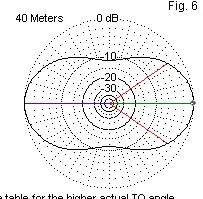I mentioned our Patreon fund-raising effort in Podcast #223. We immediately got a number of new sponsors. Thanks! We also got a question: "Hey Bill, what are you going to do with all that money?" In the spirit of SolderSmoke full transparency, I will attempt to answer that inquiry right here and now:
All funds will be used at the discretion of SolderSmoke management.
Possible (likely) uses include:
-- Buying air time on shortwave broadcast stations so that the SolderSmoke podcast can be transmitted over the airwaves. We dream of stealing listeners from Brother Stair.
-- Computers. From time to time we need to upgrade. This 486 machine is getting kind of rickety.
-- Paying fees to our internet service providers and to the server that hosts our podcast.
-- Contributing to worthy charitable causes, including the Color Burst Liberation Army (CBLA), and the Constructor Crusaders.
-- Buying audio gear we use in the podcast like the really cool microphones that have DRAMATICALLY improved our audio. No more baby-wipe pop filters for us!
-- Legal fees to the law firm of Dewey, Cheatam and Howe to fend off law suits, many of which are related to our obstinate use of 60/40 solder, and to our occasional use of images that SOME PEOPLE find offensive. We also need to pay legal fees to fight our long-contemplated expulsions from the QRP Hall of Fame (Pete is especially vulnerable here).
-- Magazine subscriptions (to those few remaining publications that have not pissed us off ).
-- Buying stuff we use in video production (cameras, tripods, lights etc.)
-- Further development of the SolderSmoke 401k Retirement fund. We currently invest in Drake 2-Bs, SSDRA books, Hallicrafters S-38Es, 3579 kc crystals, and other items sure to rise in value over time.
-- Buying gear we will talk about on the podcast or in videos (like the NanoVNA).
-- Parts. Si5351s and Raspberry Pi's for Pete. 2N3904s and J-310s for Bill.
-- A new effort to assist electronics manufacturers in China with product name selection. "Mean Well" is just not a good name for a voltage regulator. And "FeelTech" does not bring to mind a signal generator. For a fee, we can help!
-- Travel. If this ever becomes possible again, we need to get to India to meet up with Farhan. This will undoubtedly result in some awesome podcast/blog/video material. We also contemplate trips to the UK, Italy, Australia, China and New Zealand. But we still probably won't go to Dayton.
-- Buying miscellaneous tools, test gear, books, solder, rosin etc. to be used in the podcast, the blog, and in video production.
-- Buying stuff for carefully selected new homebrewers (people who will not sell the stuff we give them and then use the money to buy Baofengs).
-- A new Baofeng buy-back program. You know, like for assault rifles, but for VHF/UHF walkie-talkies instead.
We seek your input! What else should we do with the money?
















































